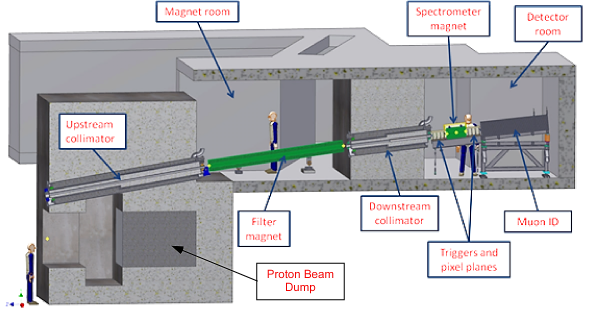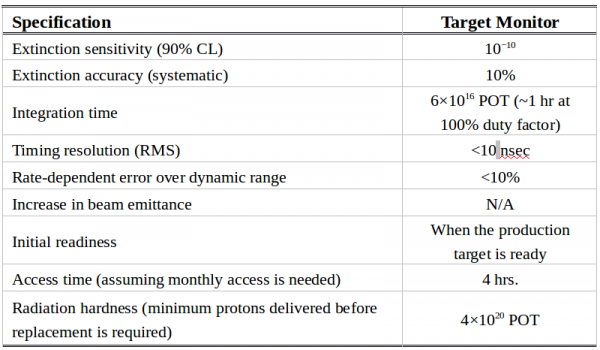ExtinctionMonitorIntro
Introduction
The Mu2e Experiment requires beam to be produced in pulses, producing muons that are captured and then have time over which to decay with no beam, to minimize backgrounds. If a small amount of beam extends into this waiting period between pulses, it will contribute to our background. We refer to the process of removing these spurious protons as Beam Extinction. The experiment's Extinction Monitor enables us to monitor the Beam Extinction by measuring the beam (protons on the production target) during times when the beam should not be live so that we understand this background.
Requirements
The requirements for extinction monitoring are summarized in Table 1. An explanation of these requirements is given elsewhere [1].
The extinction monitor, also known as the “Target Monitor,” will measure the overall performance of the extinction system by monitoring the extinction of the beam that is hitting the production target. The time scale of interest is the total time over which data is taken, but a shorter time has been chosen so that unforeseen problems may be detected before a significant amount of data is lost.
Extinction Monitor Design Overview
The target extinction monitor design consists of a momentum-selecting filter consisting of collimators and a permanent dipole magnet, a magnetic spectrometer consisting of planes of silicon strips, scintillating trigger counters and a dipole magnet, and a range stack that will help establish the muon content of both in-time and out-of-time beams. It also includes a collimator located in the primary beam line upstream of the final focus section. This collimator limits the transverse size of the beam so that, in conjunction with the protection collimator, it eliminates beam halo that would otherwise interact with the Production Solenoid cryostat and the Heat and Radiation Shield (HRS) to produce a source of background events for the extinction monitor.
[1] W. Molzon, C. Polly, E. Prebys, “Extinction Monitor Requirements,” Mu2e-doc-894


